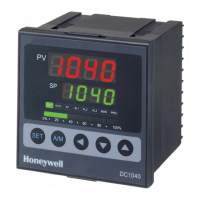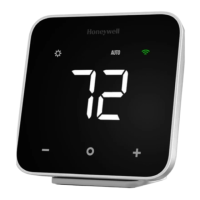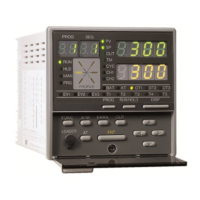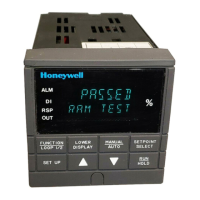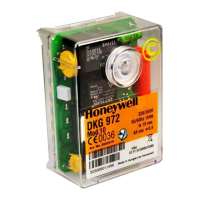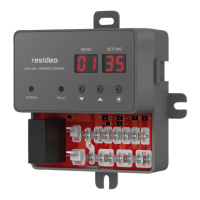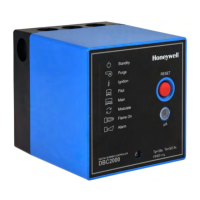Section 12 - Sensors for Economizer Modules
163 Honeywell Economizers 63-8594-02
Mixed or Supply Air Sensor Control Sequence
The control sequence for the sensor
connected to the mixed or supply (discharge)
air temperature terminals on all of the
economizer modules is basically the same.
When the space is occupied, the outdoor air
damper remains at the minimum position until
there is a call for cooling from the commercial
thermostat. If the mixed or supply air
temperature is below the lower end of the
setpoint range of 50°F (10°C) the outside air
dampers will remain at minimum. If the
measured temperature is within the range of
50 to 56°F (10 to 13.3 °C) the outside
dampers will not be modulated open or closed.
If the mixed air temperature is above 56°F
(13.3°C) the outside air dampers will be
modulated open until the temperature is within
the range or the dampers are full open. If the
enthalpy of the outside air is too high, the
outside air dampers will be returned to
minimum.
Carbon Dioxide Sensor
Honeywell C7632A
Carbon Dioxide Sensor
Carbon dioxide (CO
2
) is frequently used as
the sensor for demand ventilation control.
People exhale CO
2
as they breathe. If there is
a large number of people in a space the level
of CO
2
will increase. When a CO
2
sensor is
installed in the space, a signal is sent to the air
handler mixed air control which modulates the
outside air dampers. The required ventilation
volume for a room increases when occupancy
increases. When people leave the space, CO
2
levels will decrease and the outside air
dampers close to a more economical setting.
Ventilation cost can be controlled by using
CO
2
sensing in addition to economizer
functions.
An indoor air quality analysis should be done
to evaluate the air quality in a building.
Analysis of all compounds in addition to
carbon dioxide is required to evaluate the
overall healthiness of a building.
Contaminants, such as volatile organic
compounds, are not detected with a CO
2
sensor. Complex electronic equipment is
required to fully test for the presence of all the
various compounds which may be in the air
supply. CO
2
sensor based ventilation control
is an enhancement to economizer control, not
a substitute for a total professional air quality
evaluation of a building.
If you have a building with a high
concentration of a gas other than CO
2
,
consider using the IAQP ventilation method
but always consult a professional trained in
control of gases.
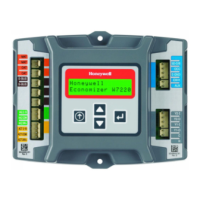
